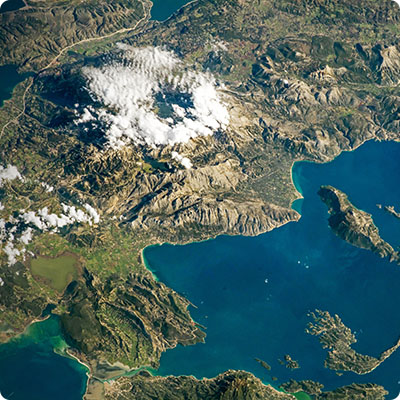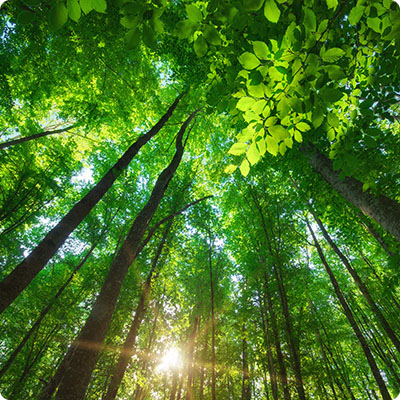To the assault on nature!
Hiking. Between forgotten valleys, craggy peaks and ridges, always with a plunging view over the waters of the Tyrrhenian Sea, hiking is a must during a stay in Elba. Cross the maquis, climb Mount Capanne at 1,019 metres, follow ancient mule trails, reach the coast... So many walks, where the delicate scents of flowers change with the hours of the day. While the most popular trails are located on the GTE, the Grande Traversata Elbana, there are many other hiking itineraries criss-crossing the island. Among them, we recommend the Pietra Murata circuit (length: 6 km, elevation gain: 325 meters, average time: 4 hours), which starts in the center of the small village of San Piero, in the municipality of Campo nell'Elba. The route then loops around the south-eastern flank of Mount Capanne, in the midst of ancient granite quarries. As everywhere, white and red markers will guide you along the way. Make sure you wear comfortable, hard-wearing clothing suited to the season, and appropriate walking shoes. And binoculars are an invaluable tool for observing the landscape and its wildlife. The best season is from late May to mid-October. Last but not least, the Tuscan Archipelago National Park website(www.islepark.it) is a must, and there are National Park visitor centers in Marciana and Rio nell'Elba (open from April to October).
Monte Capanne cable car. Want to reach the summits? A visit to Elba is inconceivable without experiencing the famous Cabinovia. This two-seater cable car takes you up to the mythical Monte Capanne in just 18 minutes. In fine weather, you'll enjoy an unforgettable view of Elba and the Tuscan archipelago...
MOUNTAIN BIKING. The island of Elba is an ideal destination for mountain bikers, offering a magnificent playground with a wide variety of difficulties to suit all abilities, as well as a remarkable diversity of landscapes. Magnificent signposted trails, varying degrees of difficulty, tracks close to the sea, lush forests, cross-country or descending enduro itineraries, cycle touring is becoming more and more popular, allowing you to get closer to nature and discover our cultural heritage on your own. And all year round. Whether you prefer a leisurely family ride through the Mediterranean scrubland, or a more extreme route to the island's peaks, it's all possible! Elba is the ideal playground for mountain bikers, and in 1994 hosted the Mountain Bike World Cup. And if you're looking for a gentler adventure, electric bikes and mountain bikes are becoming increasingly popular.
Climbing. The island of Elba is a paradise for climbers who love free climbing, the thrill of the challenge, the confrontation with nature and with themselves. Among the most interesting sites are the granitic rock routes on the western slopes around Chiessi, Pomonte and Marciana, and in particular the via ferrata leading to the summit of the San Bartolomeo massif. Level 5c and a high degree of autonomy are required, as there are no professional agencies on the island.
Top 4 walks on the island of Elba
Monte Capanne (distance: 11 kilometers - average hiking time: 5 hours).
Starting from San Piero in Campo, a village of granite workers, the trail passes through ancient quarries that evoke a past of stonecutters and quarrymen, as well as the enigmatic site of the Sassi Ritti, the "Stonehenge" of Elba. When you reach the summit of Mount Capanne, you reach the highest point on the island, at an altitude of 1,019 metres: a panoramic terrace overlooking the islands of Corsica, Capraia, Pianosa, Montecristo and Giglio. Superb! Once the batteries have been recharged, it's time to complete the route with a rapid descent through holm oaks and chestnut trees to the village of Poggio.
San Martino (distance: 5.5 kilometers - average riding time: 2 hours).
It is said that Napoleon Bonaparte, in order to think calmly and plan his return from exile without fear of spies, liked to walk the paths near his country house at San Martino. After a visit to the emperor's summer residence and the Galerie Demidoff, the route passes through one of the island's largest forests, alternating between ascents and descents, amid lush vegetation and, above all, sheltered from the heat.
Monte Calamita (distance: 19 kilometers - average hiking time: 9 hours).
This excursion to Monte Calamita, rich in magnetite and iron deposits, plunges us into Elba's great industrial history. Legend even has it that compasses went mad as they approached the shores of the Capoliveri promontory! The looped itinerary winds through abandoned mining sites (guided tours of the Miniera del Ginevro underground mine are available), Mediterranean scrub and fragrant pine forests. A panorama rich in industrial archaeology that stands out against the deep blue of the sea.
Porto Azzurro (distance: 6 km - average travel time: 2 hours).
The "Carmignani" walk follows a panoramic itinerary starting from the Pianotta beach, skirting the ancient fortress of San Giacomo, then leading to the beaches of Barbarossa and Terranera, famous for the raids of the Barbary pirates and the working of iron, an important mineral on the island's east coast. The route can be extended to the sanctuary of Monserrato, a famous place of pilgrimage in the 17th and 18th centuries, from where it's an easy descent to Porto Azzurro.
Farniente and water sports
The jagged coastline of the island of Elba, made up of a succession of peaks, islets and caves, alternates creeks, high cliffs and beaches of golden, black or white sand. No less than 200 dream spots for an active holiday between two sunbathing sessions. In the western region, you can go to the beautiful little sandy beach of Cotoncello (Sant'Andrea), in the shade of colourful tamarisk trees and surrounded by polished granite rocks, or to the beach of Cavoli, one of the most famous thanks to its crystal-clear water. In the central region, the beach of Capo Bianco, near Portoferraio, is bordered by high white cliffs plunging majestically into a turquoise blue sea. Finally, in the eastern region, the beach of Cannello, accessible only by sea, stretches with dark bands (linked to the presence of minerals) that contrast with the azure blue of the sea, as well as the beach of Barabarca near Capoliveri, in the heart of an emerald green bay and well sheltered from most winds, are also good options.
Sailing. Anchor up! Sailing off the island of Elba is a continuous discovery... The colour palette of the clear waters alternates harmoniously between turquoise and deep sea blue. The coastline is very indented, divided between indentations, steep cliffs and coves, some of which are paradisiacal. It is therefore not surprising that regattas are regularly organised here and that you can admire racing yachts manned by internationally renowned crews. The island has many yacht clubs and sailing schools offering courses for all levels all over the island.
Kayak and paddle. Kayak and paddle are ideal ways to navigate the crystal clear waters, to explore the hidden corners between the rocks and stop for example in front of the granite coves of Marina di Campo, the hidden beaches of Ischia or La Rota, the islet of Porto Caccamo, or to wade into the freshwater caves, a refuge for countless sea birds. Silent, your boat will be the privileged way to approach the marine environment. Another look at the Elbo coast!
A renowned diving destination
One of the highlights of Elba is undoubtedly its underwater wealth, protected by the largest marine park in Europe. The clear and temperate waters make it a perfect place for diving. The nature here is exuberant: conger eels, groupers, moray eels, lobsters and octopus, corals and gorgonians; not to mention the dolphins that are not uncommon to come across. A paradise that has also attracted great champions, such as Jacques Mayol and Umberto Pelizzari, who set several snorkeling records. Among the most sought-after spots: the small island of Corbella, off Mount Calamita, is one of the best dive sites for observing gorgonians. But you should also discover the Formiche della Zanca reefs, at Capo Sant'Andrea, formed by a rocky ridge descending to over 40 metres; Scoglietto, north of Portoferraio, where an underwater statue of Christ is enthroned; Capo Fonza, near Marina di Campo, torn by a fault that ends in a cave, a refuge for lobsters, octopuses, small flying foxes, nudibranchs and red gorgonians, spirographs, branches of red coral?

























































